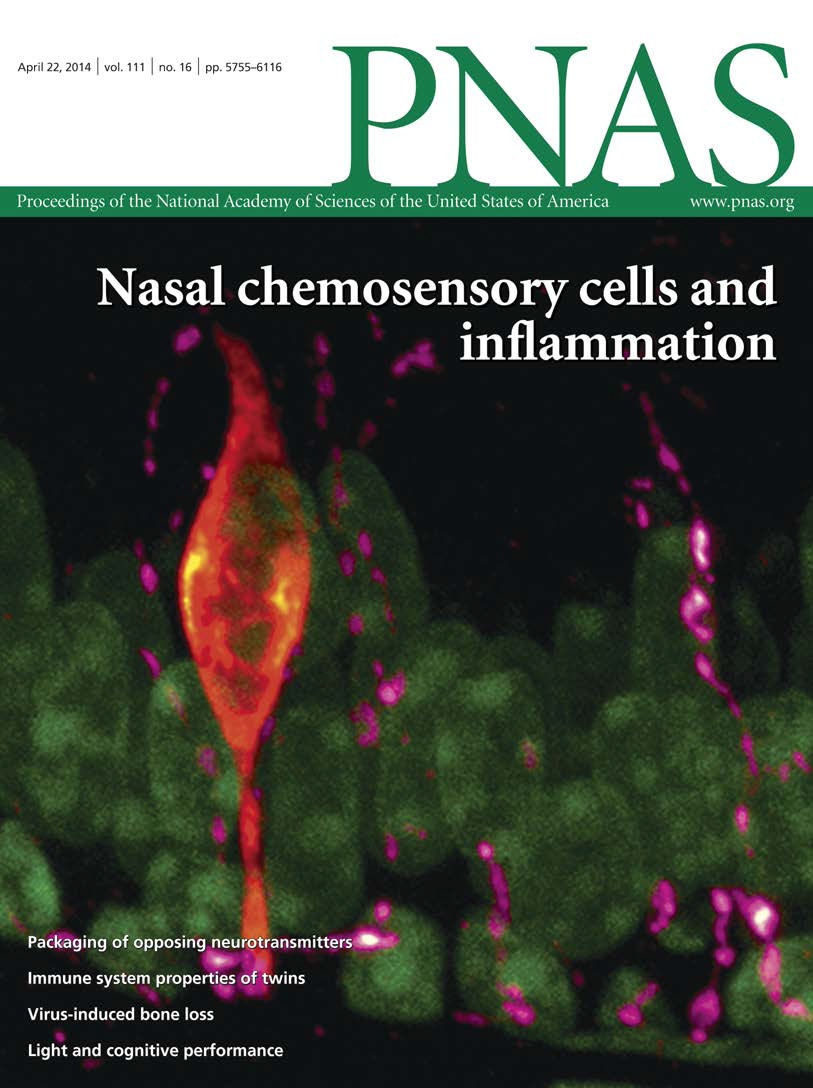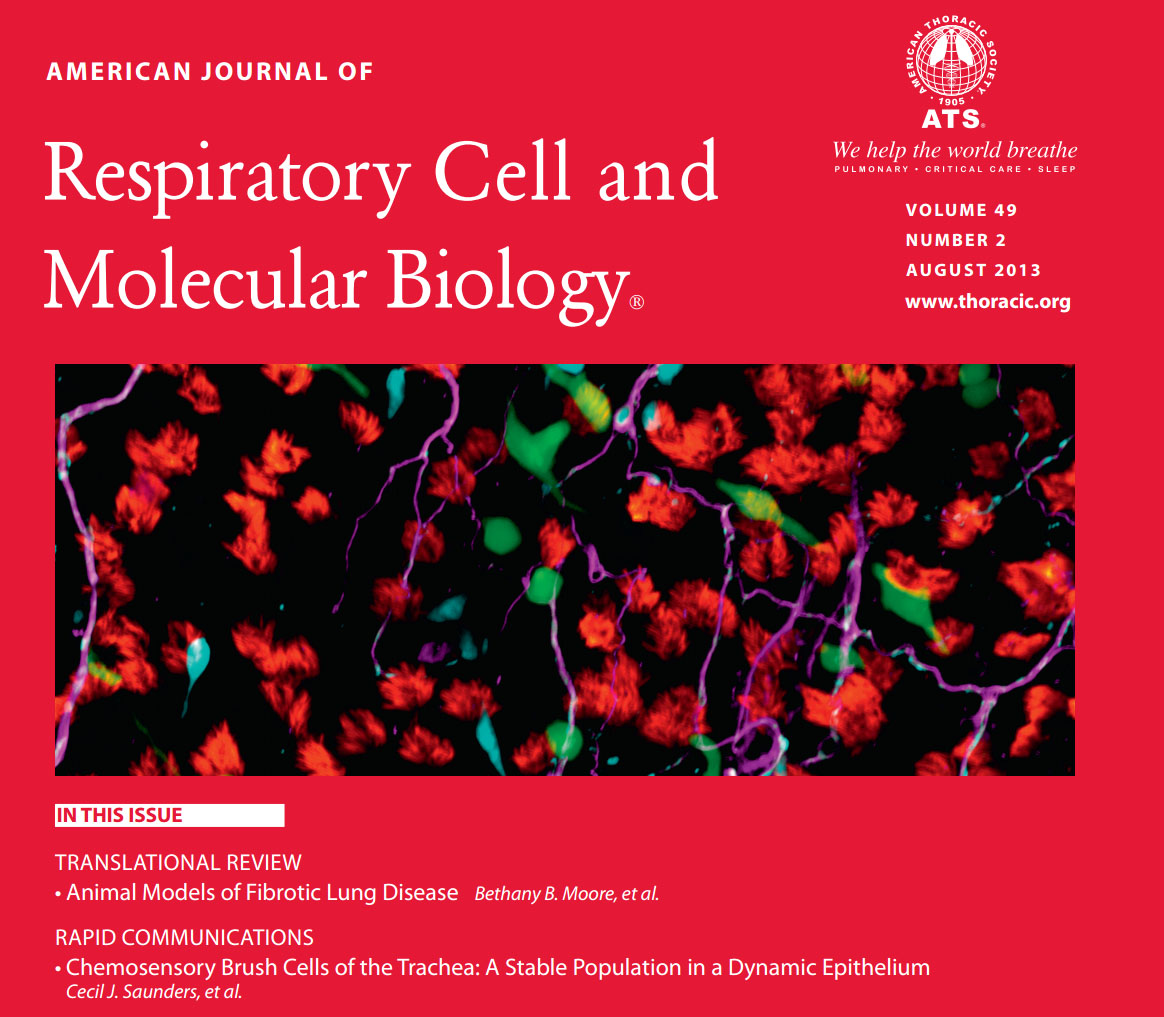
In the nose, solitary chemosensory cells (orange) detect noxious chemicals and, in turn, stimulate trigeminal nerve fibers (magenta) causing irritation and inflammation.
PNAS April 22, 2014



My research career has centered on studying the mechanisms that are responsible for detecting irritating chemicals in the upper airway. Together, solitary chemosensory cells and trigeminal sensory neurons form a warning system which monitors the upper-airway for any number of chemically diverse compounds, which may cause or signal the potential for damage to the fragile airway. Since damaging compounds have diverse chemical properties, several mechanisms are utilized by the SCC-trigeminal system to detect these substances and trigger protective airway responses.
My current research focuses on using several invertebrate model systems to examine how evolution has adapted various chemosensory systems to detect the unique chemical components of different environments.
During my postdoctoral fellowship in the lab of Noam Cohen at University of Pennsylvania in the Department of Otorhinolaryngology my research focused on the extra-oral expression of taste receptors and their role in protecting the airway from harmful pathogens.
The focus of my doctoral dissertation was on the identification, development and activation of solitary chemosensory cells. Solitary chemosensory cells synapse with trigeminal nerve fibers and provide a mechanism by which the chemical content of the lumen of the nasal cavity can be monitored by the trigeminal system. On stimulation with irritating compounds, solitary chemosensory cells release acetylcholine to activate nociceptive trigeminal fibers. The density of solitary chemosensory in the airway appears constant during an organism life and can be regenerated from basal cells after disruption of the respiratory epithelium.
During my Masters, I studied a receptor utilized by the trigeminal system to detect irritating chemicals. TRPV1 is the receptor responsible for detecting capsaicin, the warming chemical in chili peppers. However, TRPV1 can respond to many different chemicals that irritate the airway. My research involved observing how mice that were missing TRPV1 responded to a number of other irritating chemicals.